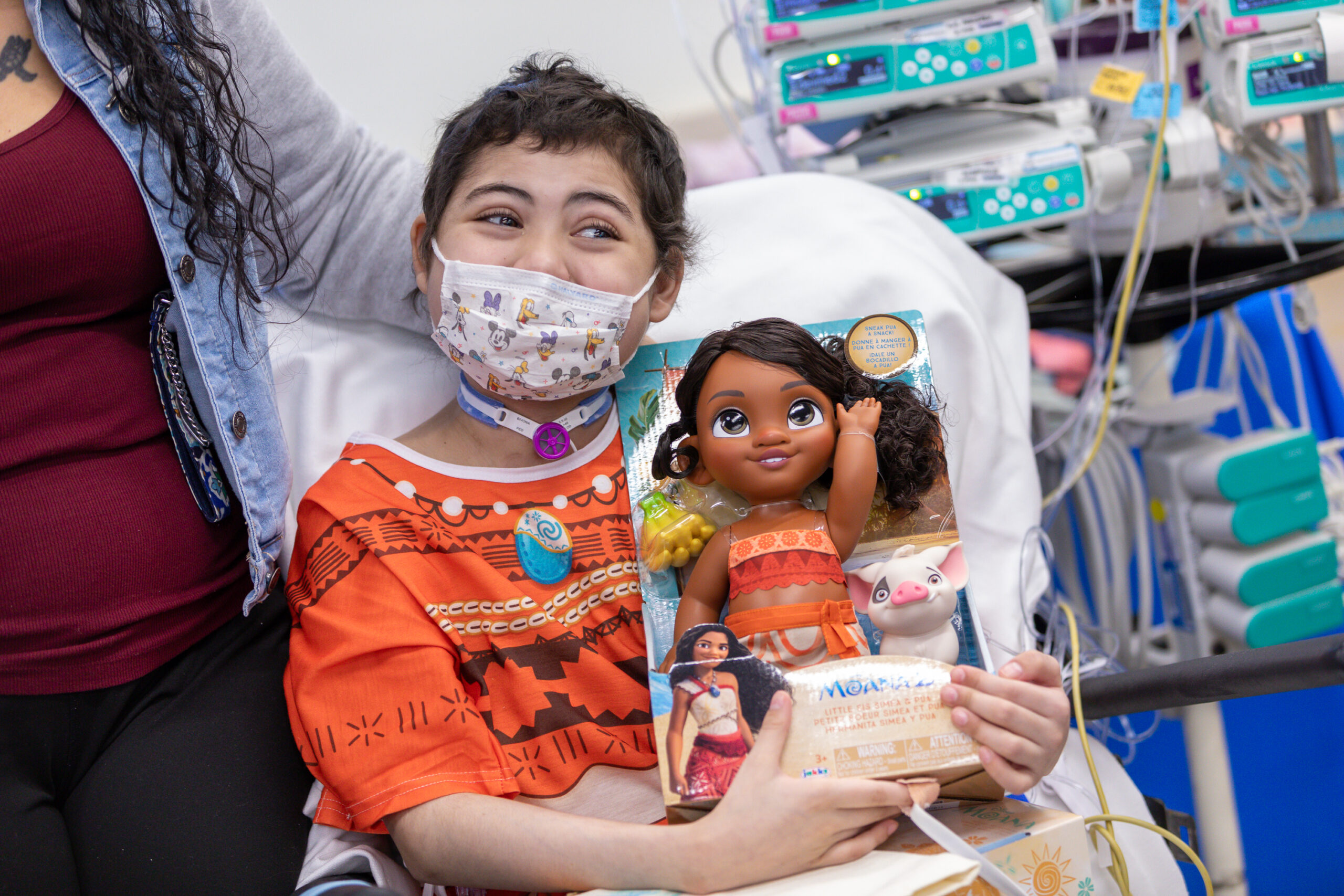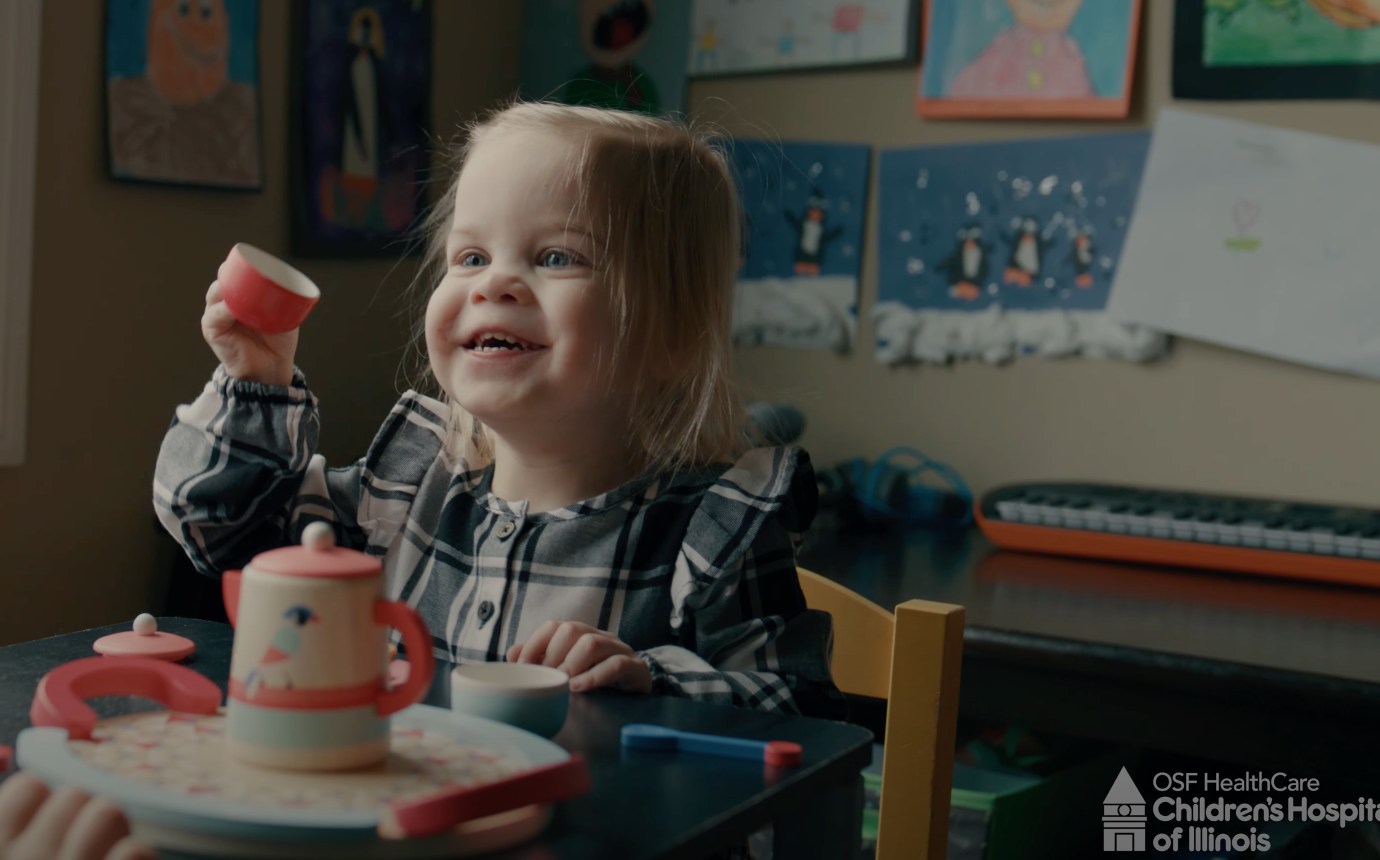
Isaac’s Impact
Children’s hospitals provide advanced care for the most complex conditions in environments specially designed for pediatric patients, allowing children like Isaac to thrive.

Every day, children’s hospitals help make moments possible. From providing access to the comprehensive care that children need to grow up to supporting children, teens, and their families with specialized treatment for some of the most complex illnesses. Discover more about the moments made possible by children’s hospital through patient stories from around the country.

Children’s hospitals provide advanced care for the most complex conditions in environments specially designed for pediatric patients, allowing children like Isaac to thrive.

The specialized multidisciplinary teams at children’s hospitals ensure that children and teens – like Cami – can beat multiple complex conditions like cancer and heart failure.

The advanced, specialized care that children’s hospitals provide make moments – like Joseph beating pediatric brain cancer – possible.

With care delivered by specially trained pediatric clinicians, in environments designed just for children, children’s hospitals help children and teens – like Daniella – navigate complex medical conditions.

Kapi’olani Medical Center for Women & Children has been Rezen’s home away from home for more than a year. The 10-year-old was diagnosed with aplastic anemia, a rare and life-threatening blood disorder. Last year, she received a bone marrow transplant and spent months in the Pediatric Intensive Care Unit. Despite these challenges, moments of joy and comfort shine through her journey. When Rezen was nervous before a routine MRI, her child life specialists gave her a Disney Princess-themed Starlight Hospital Gown to add a little magic to her stay. The Walt Disney Company and the nonprofit Starlight Children’s Foundation bring Disney Princess-themed Starlight Hospital Gowns to pediatric hospitals across the nation, helping patients like Rezen feel more comfortable during treatments. Through this long-standing collaboration, Rezen has received numerous princess gowns, building up an impressive collection. In December, Rezen completed her princess collection, receiving a Moana-themed gown, and attended a special private showing of Moana 2, experiencing the movie’s adventure before its official release! Navigating a rare disease comes with immense obstacles, but collaborations like this bring light on difficult days. Disney-themed Starlight programs, along with her care team, help make Rezen and thousands of other pediatric patients feel the magic and inspiration every child deserves.

When Alyssa was in middle school, she was diagnosed with scoliosis and received a customized back brace in hopes of halting the growing curve and avoiding surgery. But the curve continued to worsen, and after Alyssa’s freshman year, it was time for surgery. Alyssa and her family traveled to Dwaine and Cynthia Willett Children’s Hospital of Savannah Memorial Health, where she received a spinal fusion to straighten the curve. Throughout the six-hour surgery, the nurses comforted Mackenzie’s family, ensuring they understood each step. The procedure was successful, and within one week of the surgery, Alyssa had already “grown” one inch from her straightened spine! As a spirit cheerleader and sprinter for her track team, she worried how the surgery might affect her active lifestyle. But within six weeks of recovering, Alyssa was able to participate in cheer camp. While she has some restraints in stretching, she continues to cheer and run on her track team.

Mackenzie was born with hypoplastic left heart syndrome (HLHS), a condition that causes the left ventricle to be severely underdeveloped. Her heart defect was first discovered during her mom’s 16-week ultrasound, and at first, her doctors were unsure if she’d survive. But Mackenzie was a fighter. Before she was even born, her heart developed two major arteries on the right side, which alleviated the failing left ventricle, ultimately protecting her aorta and avoiding serious surgery that most HLHS patients require. After birth, Mackenzie received specialized care at OSF HealthCare Children’s Hospital of Illinois, getting her first pacemaker at five months. At 15–months, she underwent open-heart surgery to reroute her circulation, allowing her heart to thrive with only one ventricle. Since the surgery went so well, she currently has no future surgeries planned. Mackenzie’s family is grateful for their attentive and helpful medical team and looks forward to their continued support through her childhood.

A few years ago, foster parents Pam and Bobby received a call about a 6-month-old, Harrison, who needed an adoptive family. Harrison wasn’t like most other babies – he had a rare genetic condition called Duchene muscular dystrophy (DMD) that limits mobility and weakens pivotal muscles. Touched by his story, Pam and Bobby decided to give Harrison a forever home. After welcoming Harrison into their family, they met with Children’s Medical Center Dallas experts to discuss treatment options. Kaitlin Batley, M.D., Pediatric Neurologist and Director of the Duchenne Muscular Dystrophy Program at Children’s Health, outlined a new gene therapy that slows down DMD, helping children maintain the muscles needed to grow and thrive. Harrison received this innovative one-time treatment, and since then, he’s gotten better and grown stronger – walking, running, climbing, and even jumping a little! The family continues to visit Children’s Health to monitor his progress and discuss future treatments, and Pam and Bobby feel incredibly grateful for their dedicated care team as they navigate their first child with complex medical needs.

During Gavin’s first few years of life, he struggled with rashes, severe abdominal pain, and high fevers. When he started kindergarten, a trip to Johns Hopkins All Children’s Hospital changed everything. Doctors conducted thorough testing and discovered the underlying cause of Gavin’s pain: Crohn’s Disease. Crohn’s Disease is an inflammatory bowel disease that causes chronic pain and inflammation in the digestive tract. Gavin began monthly infusions, and his nurses quickly became a source of care and comfort. From bringing him toys to playing games, he always felt at home with his team. The infusions proved to be a success, ultimately allowing Gavin to enter remission! Gavin and his family felt so supported throughout his treatments that they wanted to do something in return. They’ve organized multiple donation drives, collecting hundreds of new toys for the hospital. Through their help, other pediatric patients can experience the same fun and welcoming environment that comforted Gavin through his treatments. Now in sixth grade and still in remission, Gavin loves playing golf, swimming, and playing with Legos.

From the moment Luciana was born prematurely, she’s been a fighter. She entered the world facing multiple challenges, including a three-centimeter difference in leg length and foot sizes. When she turned three, she had her first procedure at Nicklaus Children’s Hospital to help her walk straight and correct her foot. As she got older and eventually stopped growing, doctors needed to make her legs the same length. They used a new internal device that broke the bone and stretched it until it was the same size as her other leg. Today, thanks to the care she received, Luciana no longer limps and is an active teenager. While Luciana felt supported through her surgeries and rehabilitation at Nicklaus, she knows that resources for limb-lengthening surgeries can be limited. This inspired her to write a guide for teens undergoing similar procedures, providing physical and mental tips to navigate the challenges that come with the limb-lengthening process. She hopes her guide will help other teenagers remain optimistic through their unique journeys.

Eight-year-old Brittain was playing outside with his friend when a venomous snake bit his ankle. Brittain went into anaphylactic shock from the bite, and he was immediately taken in an ambulance to Atrium Health Levine Children’s Beverly Knight Olson Children’s Hospital. Once doctors secured his airway and stabilized his blood pressure, the team started Brittain on a medicine that reversed the effects of the snake’s venom. While he was on the medication, doctors had to place Brittain on a ventilator to help him breathe. During his hospital visit, Brittain was disappointed that he had to miss his baseball tournament. This is when the hospital’s child life specialist jumped into action, taking Brittain outside to play and bringing him a t-shirt from his favorite team: the Atlanta Braves! Brittain’s mom shared that these meaningful actions helped Brittain realize everything would be okay. After a few days of physical therapy, Brittain was able to go home—a day before his ninth birthday! As Brittain continues physical therapy to strengthen his ankle, he’s walking, running, and playing baseball again. While he still feels overwhelmed by the accident, his parents are helping him process residual fears and slowly bringing him back to his outdoor adventures.